Lightweight stoves for backpacking — the alcohol option
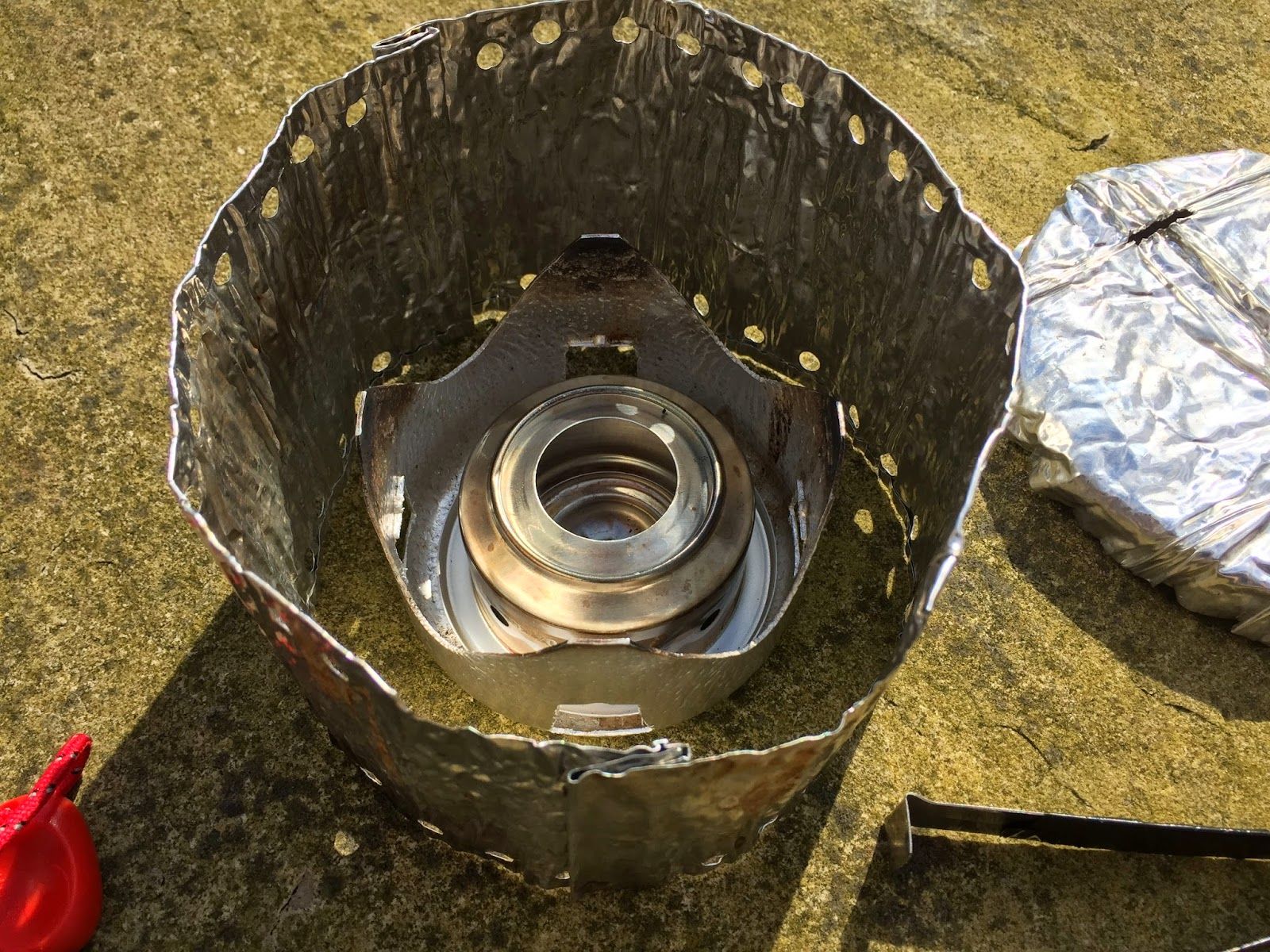
Like many a backpacker, I started my outdoor apprenticeship with a classic stove: the Trangia. These stoves run on methylated spirits (denatured alcohol) and include several nesting pots with an integrated pot stand and windshield system. The Trangia system is very reliable and safe when used correctly, but it has one major disadvantage: it’s really heavy! It’s also slow to boil a pan of water, although I’d argue that isn’t really a disadvantage.
In 2004 I switched to a Mini Trangia, which includes the traditional brass burner with a minimal aluminium pot stand and 600ml pot. The weight problem was reduced, but I was seduced by the marketing of more modern, trendier gas burners. I bought an MSR Pocket Rocket in October 2005.
Ten years with a gas stove
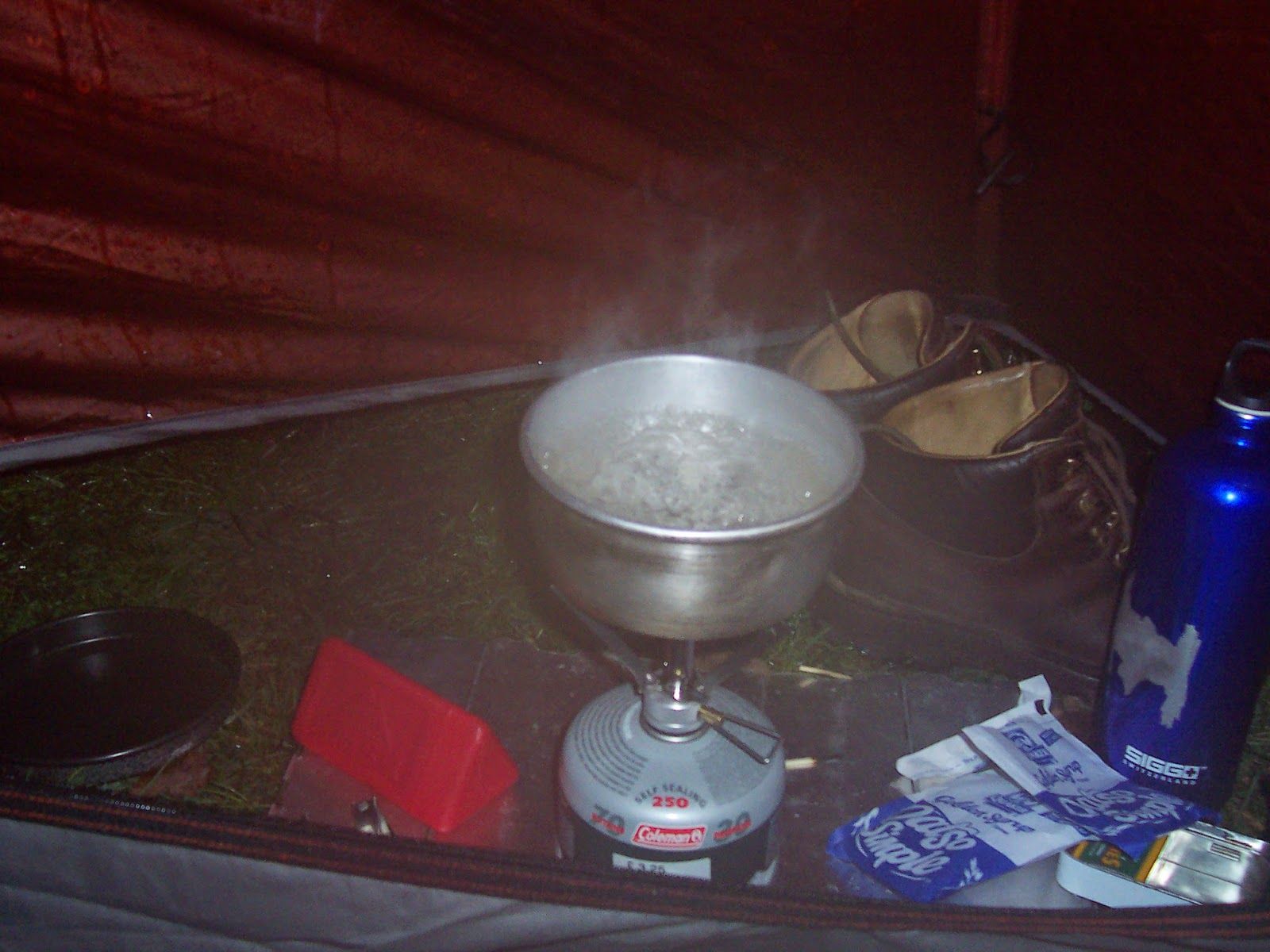
The Pocket Rocket is one of the most popular canister stoves in the world, and it’s a great option for backpacking. It has given me almost ten years of flawless service. It weighs only 85g, and consists of a valve, nozzle, and integrated pan supports. For cooking a basic meal in a small pan, it works pretty well and the power can be controlled accurately, ranging from a tiny flame to a rocket exhaust (it sounds a bit like a rocket taking off, too!)
Where canister stoves shine is in sheer convenience. You screw the canister in, open the valve, and strike your match. Flame control is superb, and you can bring a pan of water to the boil very quickly. The canister can be used many times until it’s depleted. In short, the system works.
However, no stove system is without disadvantages, and over the years I’ve gradually come to realise the drawbacks of canister stoves.
- The canisters themselves are inefficient and wasteful. A proportion of the weight you’re carrying is the pressurised can, and when it’s depleted there is no way of re-filling it. You have to carry that weight back out with you, and when you return to civilisation it will end up in landfill.
On a long trip, it can be difficult to judge how much fuel you’ll need because there is no way of accurately determining how much fuel you’ve used, or how much is left in a can. With experience you can guess this to an extent, but it’s very hit and miss. Inevitably you will end up carrying more fuel with you than you actually need — and you can’t carry less than 100g (the smallest available cartridge), even for an overnight trip.
When you near the end of a can, pressure drops and you’ll only be able to simmer. After a couple of years you’ll end up with a box full of nearly-but-not-quite-empty gas cans in your garage.
As a result of the above points, canister stoves are bad for the environment. Don’t forget that you’re also burning a fossil fuel.
Canister stoves are not very stable. If using one in your tent vestibule (which you shouldn’t really do, but I’ve done it hundreds of times) there is always the risk of knocking the whole setup over — at which point liquid fuel sprays from the nozzle and ignites at high velocity! This has happened to me once before, but fortunately I was able to put out the blaze before it spread to the tent fabric. Remote-canister stoves are available, but there is usually a weight penalty.
Canister gas is expensive. A 250g can might set you back £6 nowadays.
Gas canisters can explode or malfunction. It’s rare, and it has never happened to me before, but it remains a (small) risk.
Back to an alcohol burner?
I’m in the process of planning a hike of the Cape Wrath Trail, and I’m evaluating every item of my gear to assess its suitability. At first I took my gas stove setup for granted, but after some thought I realised it may not be the best option this time.
There are only a few resupply points on the Cape Wrath Trail, which means I’ll have to carry supplies for up to five or six days at once. With my gas stove, I’d probably take a 250g can along with me and aim to replace it when it runs out, but the difficulty in judging how much fuel remains bothers me — what happens if I run out of gas two days from the next shop? And what if that shop doesn’t even sell gas canisters anymore? Alcohol fuel is available more or less anywhere, but it’s rare that you can pick up gas cartridges from (say) a petrol station. It’s just easier to find fuel for an alcohol stove.
I like the fact that, with an alcohol burner, you can measure how much fuel you will need accurately, and only carry the fuel necessary for your purposes. Boiling times will decrease, but that doesn’t bother me on the trail. And I think I’ve put together a stove that’s a fair bit lighter than my old Pocket Rocket setup.
My new setup
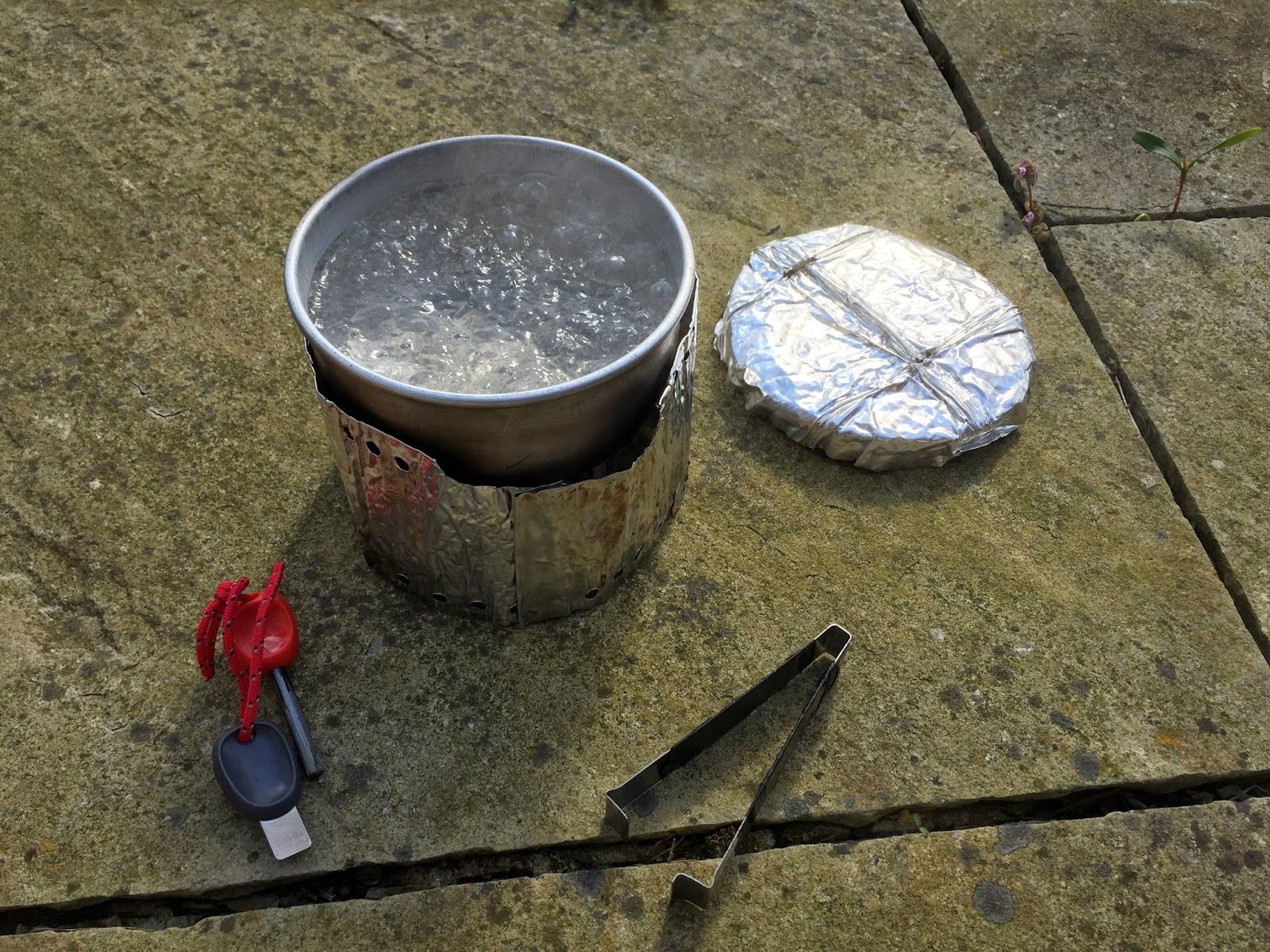
My ‘new’ setup is actually based on my old Trangia Mini. It uses the same excellent aluminium pan, which is just the right size and very lightweight. It even uses my old windshield (bodged from an old MSR petrol stove windshield). The pot stand and pot gripper are also the same.
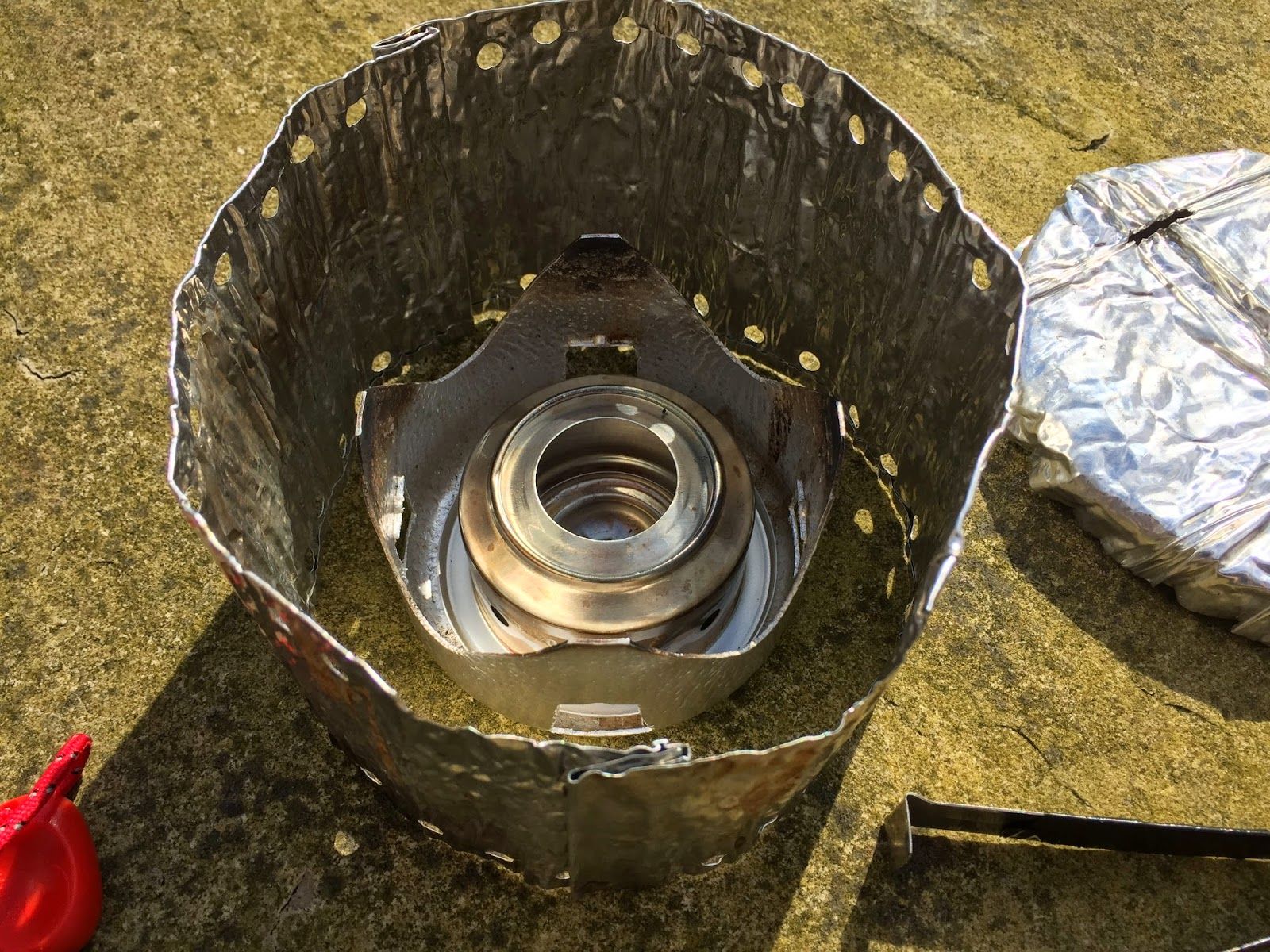
Where it differs is the burner. The old Trangia burner weighed over 100g and was never particularly efficient, but I’ve replaced it with a Trail Designs 12-10 burner weighing only 16g. It’s a similar idea to the Trangia burner — you measure out some fuel, which sits in the central reservoir and burns until it’s used up — but far simpler and made from recycled aluminium cans. It’s also much more efficient than my old Trangia burner, and can keep water boiling for longer on the same amount of fuel.
Many backpackers swear by the full Caldera Cone setup, which matches the 12-10 burner to a special conical windshield specifically designed to fit their pot. However, my existing windshield and pot stand rig is already pretty good, so I decided only to replace the burner.
So how does it perform? I’ve loaded up the 12-10 burner and done a test run in breezy conditions. It boiled 500ml of very cold water in eight minutes, continuing to burn for another three minutes until the fuel ran out. This boiling time is nowhere near as fast as the Pocket Rocket, but the 12-10 burner accomplishes this feat on 30ml of fuel — that’s the equivalent volume of an empty 35mm film pot. Not bad, I think. And the addition of a pot cosy should allow me to save 5-10ml of this fuel for a future meal.
The pot cosy
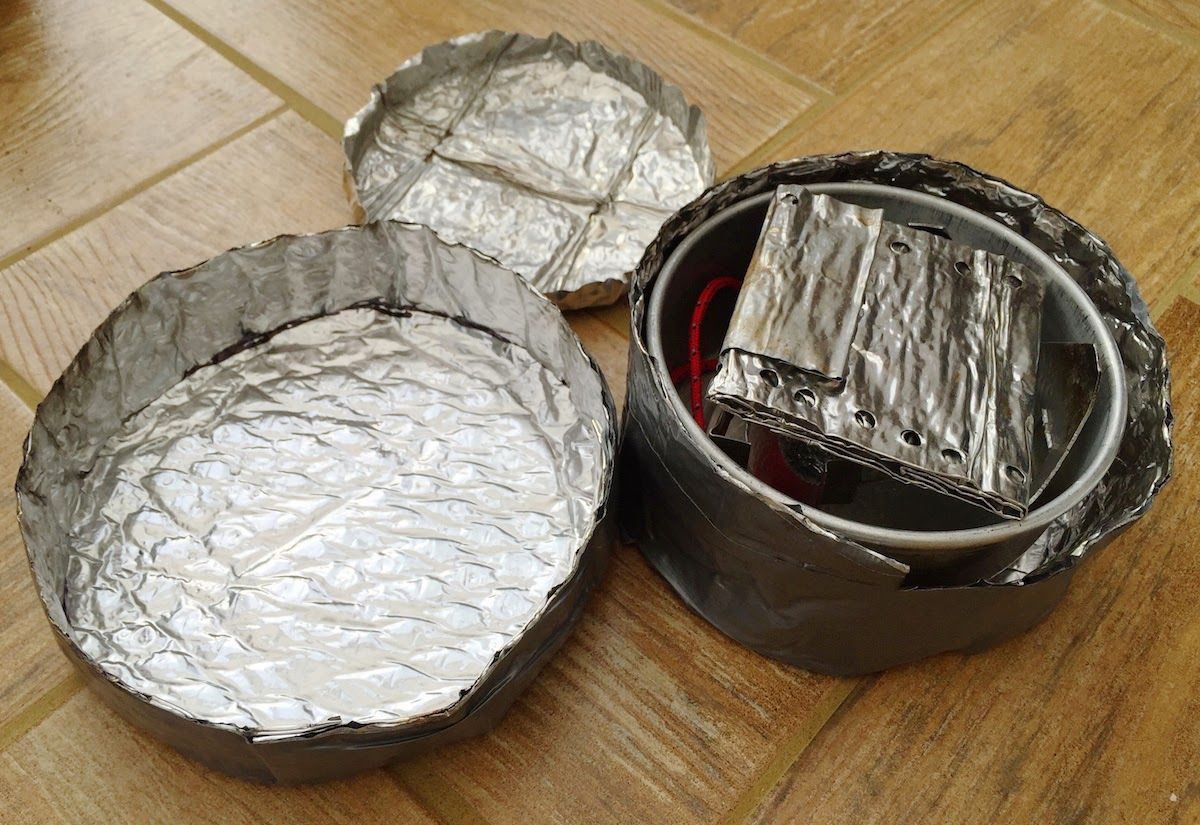
After reading this excellent piece on Keith Foskett’s blog, I decided to make a pot cosy to go with my pot. I’ve never used one before, but it promises to boost fuel efficiency yet further by allowing you to extinguish your stove as soon as the water boils. You then transfer the pot + food to this insulated jacket, tailor-made to your pot, where it continues to simmer in its own heat for up to half an hour.
In my (completely non-scientific) test, freshly boiled water was still piping hot after twenty minutes in the pot cosy. An uninsulated pot with the same amount of boiling water was tepid at best after the same interval. In short, I’m convinced — but I have yet to try it out in the field.
My pot cosy weighs only 50g so I’m sure it will pay for itself in terms of fuel weight saved.
The weight of the whole setup, minus fuel, is only 200g. That’s actually nearly 100g lighter than my Pocket Rocket setup, including windshield — and while alcohol stoves are not as efficient as gas in the long term, I’m confident that the advantages stated above will make this the right choice for my summer backpacking adventures this year.
Do you use an alcohol stove in the hills? What’s your setup of choice?
Alex Roddie Newsletter
Join the newsletter to receive the latest updates in your inbox.



